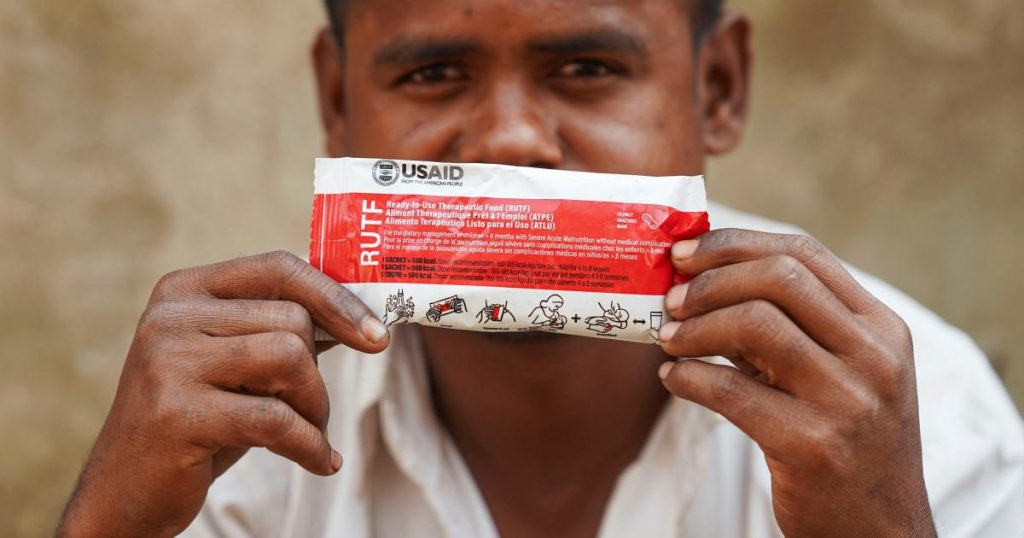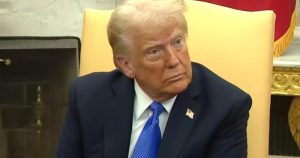Last week, the Trump administration ignited a firestorm when it issued a stop-work order for most U.S. foreign aid programs and announced that it would permanently close all 80 field missions of the U.S. Agency for International Development, the U.S. government’s primary aid agency, which I led from 2001 to 2006. The State Department, implementing an executive order from President Donald Trump, described the purpose of the halt as ensuring that foreign aid is “efficient and consistent with U.S. foreign policy under the America First agenda” and announced it would review all aid programs to determine which should be cut or redesigned. Yesterday, The New York Times reported that the administration had decided to reduce USAID’s workforce from around 10,000 people to under 300 and to cancel around 800 awards and contracts administered by the agency. These extreme moves would spell the end of U.S. foreign aid as we know it.
The stop order has paralyzed U.S. aid programs around the world, bankrupting fragile local aid groups and small businesses and putting lives at risk. Popular programs that manage emergency response and promote global health have been incapacitated. The Peace Corps, for instance, has its own budget to pay its personnel, but the 60-year-old program relies on USAID for assistance on projects relating to agriculture, education, and clean water. The President’s Emergency Plan for AIDS Relief (PEPFAR) has saved an estimated 25 million lives since it was launched in 2003; the halt threw the program into chaos, although it was later granted a limited waiver to resume some activities. Other programs were less fortunate. Investigations into malaria and other diseases have ceased. So has support for Disaster Assistance Response Teams, which for nearly 30 years have been a means for the United States to quickly and efficiently dispatch workers to prevent or alleviate humanitarian catastrophes. Programs that save lives must continue, and Secretary of State Marco Rubio should move as quickly as possible to restore their funding, including to the USAID Famine Early Warning System, which is the guiding mechanism for targeting food aid.
When I took over as administrator of USAID in 2001, I worked to align the agency’s priorities with President George W. Bush’s foreign policy, as most USAID leaders do for the presidents they serve. I initiated a review of every USAID program and canceled scores of projects that wasted taxpayer money. It’s perfectly appropriate for the Trump administration to initiate its own such review. It makes little sense, however, to issue a blanket stop order before doing so.
The world today is not the one that Washington’s post–Cold War foreign aid strategy was designed for. There are many ways in which the Trump administration can adjust foreign aid programs to serve its broader policy goals without needlessly putting lives at risk or harming U.S. interests. Simply slashing vital programs is a huge mistake, but a far-reaching review and restructuring of U.S. foreign aid is overdue. This assistance is one of the most powerful tools Washington has to push back against Chinese and Russian influence and to prevent transnational threats, such as disease and terrorism, from reaching U.S. soil. By focusing its attention on countries at the center of great-power competition and in which the United States has clearly defined interests, the Trump administration can fit U.S. aid programs for the demands of a new era.
AID AS STRATEGY
The United States’ objectives for foreign aid can and should change when its larger foreign policy priorities shift—if the budget appropriated by Congress, saddled with hundreds of earmarks and directives, will allow it. Since 2007, every dollar spent in the USAID budget has been controlled by the State Department’s Office of Foreign Assistance to ensure funding is consistent with national security objectives. When I served as USAID administrator, the United States was an unrivaled superpower. The Bush administration’s primary national security concerns were terrorism and fragile states whose instability could foster extremism. USAID focused on developing programs in Africa and the Middle East, following the requests of the president and the State and Defense Departments.
As the global war on terrorism wound down, the focus shifted. Today, USAID assistance is often allocated based on human needs and on the development performance of recipient countries. In some cases, aid is used as a bargaining chip in diplomatic negotiations. This is not the best use of limited resources, but it is occasionally necessary. For example, in 2003, during negotiations over an agreement for Djibouti to host a U.S. military base (the only one in Africa), U.S. aid was a valuable enticement. When it came time to sign the deal, I was in the Oval Office with Bush and President Ismail Omar Guelleh of Djibouti. Bush asked Guelleh what the United States could do for him in return for hosting the base. Guelleh immediately replied, “I want a USAID mission in my country.” USAID subsequently built schools in Djibouti, upgraded its main port, improved its livestock trade, and installed solar energy infrastructure.
Humanitarian assistance to save lives in disasters, civil wars, and famines should always be based on need. So, too, should health programs, which have saved tens of millions of lives over the decades. These programs made up 55 percent of the USAID budget in 2019. Cutting these budgets will lead to the death of innocent people and ruin the humanitarian legacy of the United States.
But other priorities in U.S. aid allocation could use updating. The problem is not USAID’s management; in a 2022 assessment by the nonprofit organization Results for America, USAID ranked third out of nine federal agencies and departments when it comes to making evidence- and data-driven budget, policy, and management decisions. But changes in global power dynamics call for a new approach to aid. The United States is facing a dangerous era of great-power competition with a rapidly arming China and a revanchist Russia. As Rubio has said: “Every dollar we spend, every program we fund, every policy we pursue must be justified by the answer to one of three questions: Does it make America safer? Does it make America stronger?” Those are the right questions. But the Trump administration’s actions, so far, do not answer them.
GEOGRAPHY MATTERS
A new foreign aid strategy could help the United States prevail in an intensifying global competition. Key to this approach should be a careful selection of places where Washington should concentrate its assistance. Countries that face immediate threats from China, Iran, North Korea, and Russia should be at the top of the list. They include Southeast Asian countries and island nations in the Pacific Rim, which are under pressure from China; Ukraine; Moldova; several Balkan states; countries in Central Asia and the Caucasus that are threatened by Russian subversion; and Iraq, which struggles to resist Iranian influence. Right now, U.S. programs in many of these places are too modest. Comprehensive, highly visible USAID missions can strengthen these countries’ ability to withstand outside pressure.
In other places, Washington has specific interests that aid provision can help it advance. One is access to critical natural resources. China and Russia are investing in countries that have gas and oil reserves and deposits of the minerals used in high-tech industries, including copper, cobalt, and lithium, in an effort to dominate access to these resources and deny them to the United States and its allies. USAID missions can push back on those efforts by helping national governments conduct open bidding for contracts instead of making secret, corrupt deals with China and Russia. In Central America and the Caribbean, state weakness is a key driver of illegal migration into the United States. U.S. aid programs that improve governance, produce economic growth and new jobs, and extend health care and education can reduce the incentives for people to migrate. And in parts of Africa and the Middle East where violent, radical Islamist groups are causing chaos, U.S. programs for poverty reduction, health, education, and agriculture can shore up local governance and prevent terrorism from spilling across borders and threatening the United States itself.
It is also essential to keep in place USAID health programs that serve as an early warning system for disease threats that could turn into pandemics and spread to the United States. National borders, however well guarded, cannot alone contain infectious diseases. Nearly all USAID missions have well-established health programs, and the agency has a strong track record of monitoring outbreaks in vulnerable areas of the world. Over three decades, USAID has helped health ministries in 90 countries develop data collection systems to track disease incidence. Together with the Centers for Disease Control and Prevention, USAID’s programs contained the spread of HIV/AIDS. USAID is often the sole U.S. government agency doing this kind of work in developing countries, and it should be allowed to continue.
Washington has specific interests that aid provision can help it advance.
Finally, geography should guide U.S. aid allocation. A 2017 study by the think tank Chatham House identified 14 maritime chokepoints through which much of the global supply of fertilizer for agriculture and 50 percent of commercial food is shipped. They include the Panama Canal, the Suez Canal in Egypt, the Strait of Gibraltar between Morocco and Spain, the Strait of Hormuz between Iran and Oman, and the Bab el Mandeb Strait between Djibouti and Yemen. If, during a conflict, several of these chokepoints were to close at once, the global food system could collapse or at least be severely compromised. The United States imports relatively little of the food it needs (15 percent) compared with China (40 percent). But it is one of the world’s main exporters of food, particularly beef, pork, corn, and wheat, and open waterways are essential to U.S. export markets.
Apart from its agricultural exports, the United States has a strong interest in keeping the maritime food trade flowing in order to maintain global stability. Dramatic increases in food prices can cause riots, bring down governments, and ignite revolutions, as they did in the Middle East during the Arab uprisings of the early 2010s. In the late 1960s and 1970s, half of USAID’s budget was devoted to improving rural development to increase agricultural yields in Asia. The effort was astonishingly successful; the use of high-yield seed varieties and fertilizers tripled grain production with only a 30 percent increase in the amount of land being cultivated. It saved tens of millions of lives that might otherwise have been lost to famine. As USAID was implementing what became known as the Green Revolution, Chinese leader Mao Zedong was pursuing the Great Leap Forward, which resulted in tens of millions of Chinese people starving to death—one of the greatest famines in human history. And thus, USAID helped win the Cold War in Asia. Today, USAID’s Feed the Future initiative to increase agricultural production has expanded to parts of Africa with fast-growing populations. The remaining USAID family planning programs in Asian countries, where they are no longer needed, should transfer immediately to African countries, where they are. Fertility rates are so high in some African countries that they may not be able to feed their populations in the future even with these agriculture programs.
USAID missions also have a major role to play in stabilizing the countries that control maritime chokepoints. Aid programs should be situated in places such as Djibouti, Egypt, Morocco, Oman, Panama, and Yemen, among others. Under President Barack Obama, the Office of Management and Budget pressured USAID to close its mission in Panama, which is home to the most important canal in the world, because the country had “graduated” to middle-income status. In the years that followed, the Panama Canal suffered from a water shortage that dramatically slowed movement through the canal. Had USAID been more active in the country, it could have helped remedy the problem by bringing in engineers to design new systems to direct more water to the canal. And as the United States pulled back, China leaned in, investing in Panama’s port infrastructure for two cities on the canal. Washington needs to update its criteria for aid provision to meet the demands of great-power competition. Rather than allocating aid based on development benchmarks, USAID missions and programs should be tied to U.S. economic and security interests and should be closed only when those interests change.
DO NO HARM
Reorienting the United States’ foreign aid in this way would revive a tried-and-tested formula. During the Cold War, the most successful USAID programs were those in places where vital U.S. interests were at stake, including Greece, India, Indonesia, Taiwan, Thailand, Turkey, and South Korea. In these and many other countries, USAID started business schools at local universities to train a new generation of business leaders. The agency also brought 20,000 promising young people each year to the United States to obtain graduate degrees in economics, agriculture, and public health, expertise they used when they returned home to jobs at government ministries and in the private sector. In the Asian countries, USAID fostered the Green Revolution. Money was squandered in a few cases, such as in the Democratic Republic of the Congo and Somalia, where heads of state were more interested in stealing money than in development. But these examples were the exception, not the rule.
Overhauling the United States’ aid program will require opening new USAID missions in important countries, such as Panama and Oman, and shutting down ones in peripheral areas, such as Paraguay. But it would be incredibly damaging and shortsighted to gut USAID altogether. If it disappears, the United States will cede the field to China and Russia.
Beijing and Moscow are itching to fill the gap, having worked to undermine U.S. aid programs for years. Chinese and Russian cyberwarfare operations frequently target USAID programs with misinformation on vaccines and U.S. democracy promotion. Both countries recognize how powerful a tool these programs are for protecting the United States’ interests and those of its friends. Tellingly, Dmitry Medvedev, a close ally of Russian President Vladimir Putin, took to social media on February 2 to compliment Elon Musk, a key adviser to Trump, for orchestrating the destruction of USAID, which Musk boasted he was “feeding into the wood chipper.”
Developing countries alarmed by the shutdown of U.S. aid programs will be quick to turn to alternative sources of funding for lost services. The United States is no longer the sole superpower and provider of aid. If it abdicates this role, leaders of countries that have been receiving U.S. assistance will inevitably seek China’s help to fill the void. And if it turns out that the current great-power competition is leading to a bigger clash, the United States will already have lost the first battle. Halting aid programs and closing USAID missions will push developing countries away from the United States and into the arms of its adversaries. The Trump administration must reverse these steps before they do more damage. Only then should it begin a serious, careful review of what the United States wants to achieve with foreign aid and how to accomplish it.
Loading…








